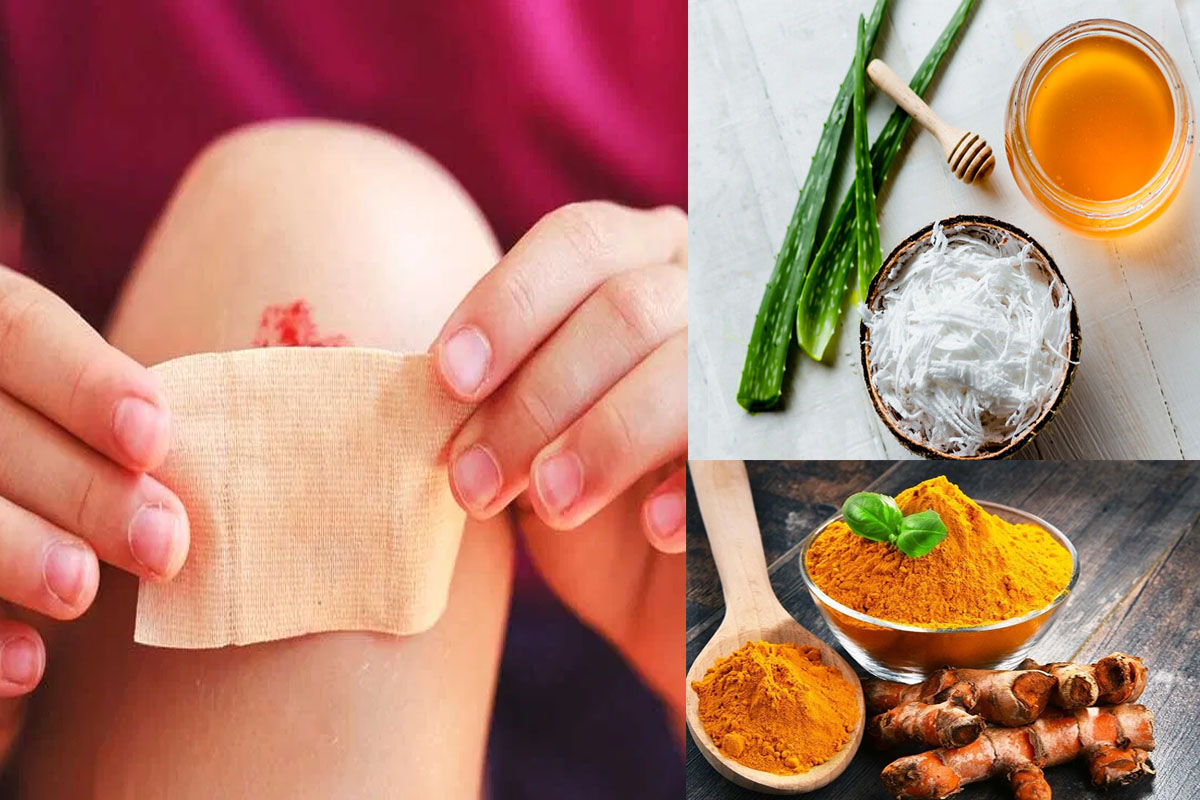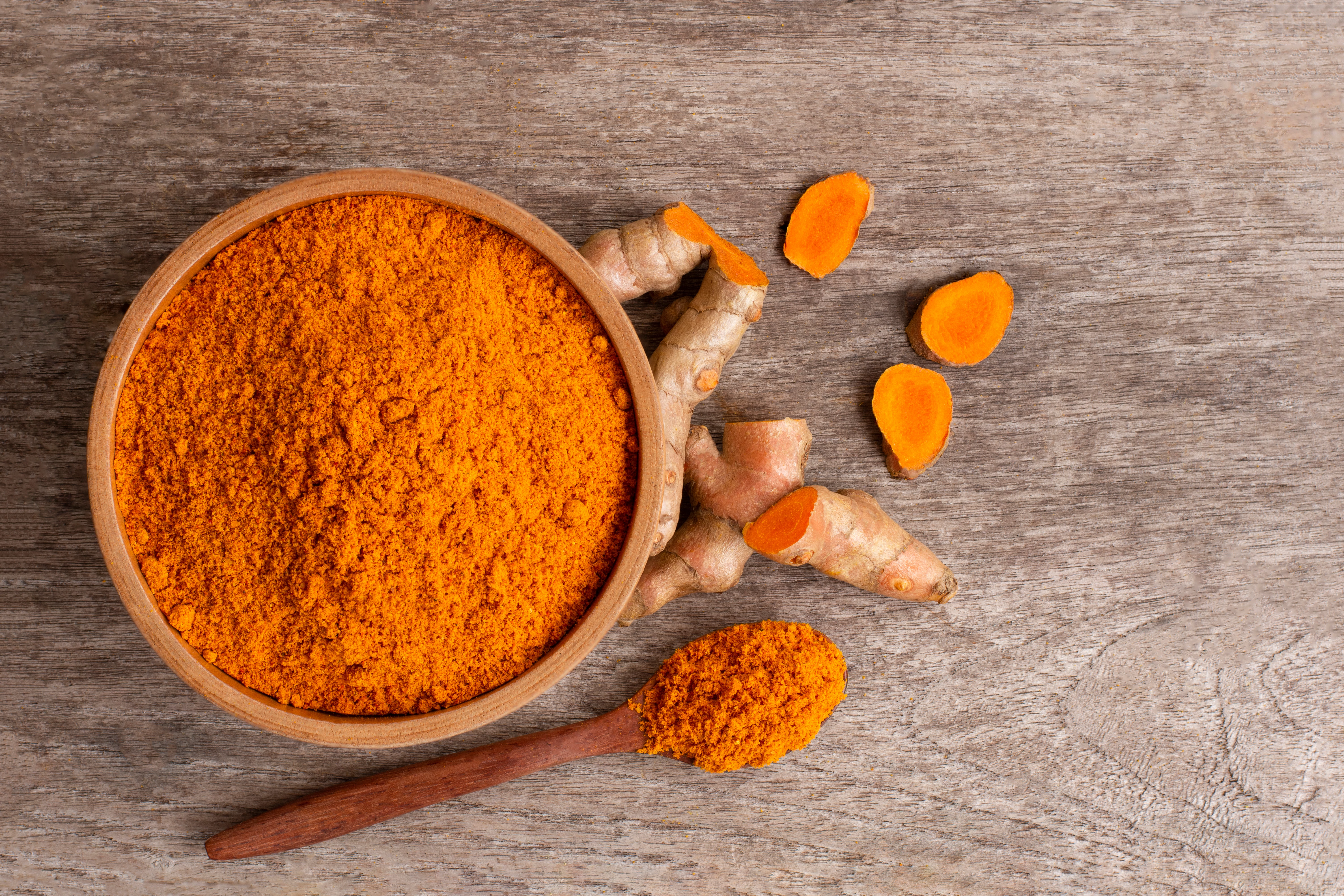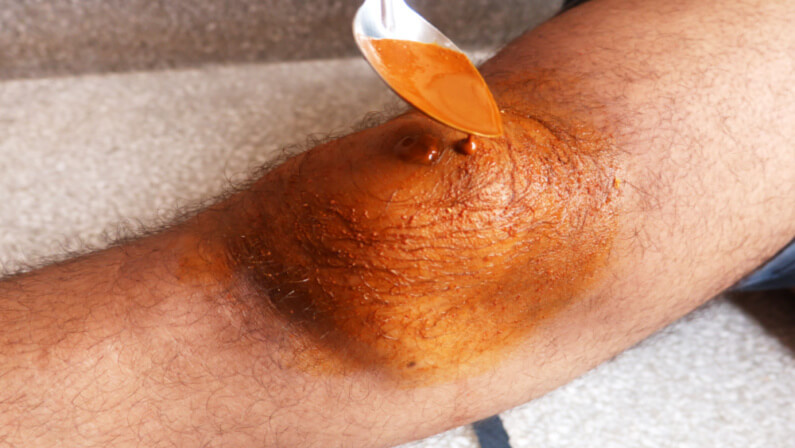Imagine this: you're cooking dinner or working on a DIY project, and suddenly, you notice a small cut on your finger. It's not serious, but it's enough to make you pause.
Instead of reaching for chemical-laden ointments, what if you could turn to a natural remedy that’s been trusted for centuries? Turmeric paste for minor cuts offers a gentle, effective way to soothe and heal your skin. You might have this golden spice sitting right in your kitchen, waiting to be your trusty ally.
Discover how this simple solution can transform your approach to minor injuries, offering not just immediate relief but also peace of mind. Curious to learn more? Keep reading to uncover the secrets of this natural healer and see how it can become your go-to remedy for minor cuts.
Benefits Of Turmeric For Skin
When it comes to natural remedies for skin, turmeric stands out for its remarkable benefits. Known for its vibrant yellow hue, turmeric has been used for centuries in Ayurveda for its healing properties. It’s not just a spice; it’s a powerhouse for skin health. Whether you're dealing with minor cuts or aiming for healthier skin, turmeric might just be what you need. Let's dive into why turmeric is so beneficial for your skin.
Natural Antiseptic Properties
Turmeric is a natural antiseptic. Its active ingredient, curcumin, helps fight bacteria and prevents infections. Have you ever used turmeric on a minor cut? You might have noticed how it keeps the area clean and free from infection. This makes it a great first aid choice for minor skin injuries. Next time you have a small cut, consider reaching for turmeric paste instead of your usual antiseptic cream.
Anti-inflammatory Effects
Turmeric is renowned for its anti-inflammatory effects. It helps soothe irritated skin and reduces swelling. You know that annoying redness and puffiness around a cut? Turmeric can help calm that down. Applying turmeric paste can provide immediate relief, making it a go-to for inflammation. Imagine cutting down your recovery time by simply using a kitchen spice!
Promotes Wound Healing
Turmeric doesn’t just stop at being an antiseptic or anti-inflammatory; it actively promotes wound healing. It aids in new cell formation, speeding up recovery. Have you ever been surprised by how quickly a cut heals after using turmeric? This is why many people swear by its healing properties. Consider integrating turmeric into your skincare routine for its regenerative benefits. How might your skin care approach change if you embraced natural solutions like turmeric?
These benefits make turmeric a compelling choice for skin health. So, next time you have a minor cut, think about your spice rack. Turmeric paste might be the simple, natural remedy your skin needs.

Credit: www.thestatesman.com
Ingredients For Turmeric Paste
Turmeric paste is a natural remedy for minor cuts. Creating your own paste requires understanding its components. Each ingredient plays a role in healing. Below, find essential components and optional additives for making turmeric paste.
Essential Components
Turmeric powder is the main ingredient. It contains curcumin, which reduces inflammation. Use fresh or organic turmeric for best results. Coconut oil helps bind the paste. It adds moisture and has antibacterial properties. Mix these two for a smooth paste.
Water is necessary for consistency. It makes the paste easy to apply. Adjust the amount for thickness preference. Use clean, filtered water for purity. These basic components create an effective healing paste.
Optional Additives
Honey can enhance healing. It is a natural antiseptic. Adding a small amount increases effectiveness. Aloe vera gel soothes and cools skin. It aids in faster recovery. Essential oils like lavender or tea tree oil can be used. These oils offer additional antibacterial benefits.
Choose additives based on personal needs. Each offers unique benefits. Test small amounts first to avoid skin reactions. Customize the paste for optimal healing. These additions make the paste more versatile.
How To Make Turmeric Paste
Turmeric paste can be a gentle remedy for minor cuts. Mix turmeric powder with water to form a thick paste. Apply it to the affected area for its soothing and healing properties.
If you've ever wondered how to make a natural remedy for those pesky minor cuts and scrapes, turmeric paste might just be your answer. This golden spice isn't just for cooking; it has been used for centuries in traditional medicine for its healing properties. Creating your own turmeric paste at home is not only simple but also a great way to harness the natural healing power of this vibrant spice.
Step-by-step Guide
Creating turmeric paste is a straightforward process. Start by gathering your ingredients: turmeric powder, water, and a pinch of black pepper. Black pepper enhances the absorption of curcumin, the active ingredient in turmeric. First, add a quarter cup of turmeric powder to a small saucepan. Gradually mix in half a cup of water, stirring continuously. Cook over low heat until the mixture thickens, similar to the consistency of yogurt. This usually takes about 7-10 minutes. Once thickened, remove from heat and add a teaspoon of black pepper. Mix well and let it cool. You can store this paste in an airtight container in the refrigerator for up to two weeks.
Preparation Tips
Using fresh ingredients is key for effective results. Ensure your turmeric powder is of good quality and hasn't been sitting in your pantry for too long. Consider adding a teaspoon of coconut oil to your paste. Coconut oil can help moisturize the skin and aid in healing. Plus, it gives your paste a smoother texture. When applying the paste, use a clean cotton swab. This prevents contamination and ensures you're applying just enough to cover the wound. Have you ever tried making turmeric paste before? You might be surprised at how simple it is. It's a handy remedy to have on hand, especially for families with active kids who often come home with scrapes and minor cuts. Why not give it a try and see how it works for you?

Credit: www.zarbees.ca
Applying Turmeric Paste On Cuts
Turmeric paste is more than just a culinary delight; it's a natural remedy that can be a game-changer for treating minor cuts. Imagine having an all-natural solution right in your kitchen that can help speed up healing and reduce inflammation. But how do you actually apply turmeric paste to cuts effectively? Let's break it down, step by step, to ensure you're getting the most out of this golden spice.
Cleaning The Wound
Before applying turmeric paste, it's crucial to clean the wound thoroughly. This step is non-negotiable. You need to ensure that the cut is free from dirt and debris. Use mild soap and warm water, gently rinsing the wound. Pat it dry with a clean towel. This helps prevent infection and prepares the skin for better absorption of the paste.
Have you ever rushed through wound cleaning? It’s tempting to skip this step, especially if you're in a hurry. However, taking the time to clean the cut properly can make all the difference in healing. A clean wound means a better canvas for turmeric to work its magic.
Proper Application Techniques
Now, let's talk application. Applying turmeric paste is straightforward but needs precision. Use a clean spatula or your fingers to apply a thin layer directly onto the cut. Ensure you cover the entire wound without leaving gaps. This helps maximize contact and effectiveness.
It's easy to assume that more paste means better healing, but that’s not the case. A thin layer is sufficient. If you use too much, it can get messy and potentially irritate the skin. Remember, less is more when it comes to turmeric paste.
Have you ever wondered why turmeric stains everything it touches? This vibrant property is a reminder to cover the wound with a sterile bandage after application. It keeps the paste in place and prevents staining your clothes or bedsheets.
As you apply the turmeric, consider this: what other items in your kitchen might have hidden healing properties? Turmeric is just one example of nature's pharmacy. It’s a reminder to look beyond the surface and explore the potential of everyday ingredients.
By following these steps, you can harness the power of turmeric paste and transform how you treat minor cuts. Are you ready to give it a try next time a minor accident happens?
Precautions And Side Effects
Turmeric paste is a natural remedy for minor cuts and wounds. Its anti-inflammatory and antiseptic properties make it popular. But there are precautions and side effects to consider. Understanding these helps ensure safe use.
Possible Allergic Reactions
Some people may have allergic reactions to turmeric. Itching, redness, or rash can occur. Stop use if these signs appear. Consult a healthcare professional for advice. Always patch test before using turmeric paste. Apply a small amount on the skin. Wait for 24 hours to check for reactions. This step ensures it is safe for your skin.
Avoiding Stains
Turmeric is known for its bright yellow color. It can stain skin and clothes. To prevent stains, apply carefully. Use gloves when handling turmeric paste. Cover cuts with a bandage after applying the paste. If stains occur, wash with soap and water. Lemon juice or baking soda may help remove stubborn stains. Always handle turmeric paste with care to keep your surroundings clean.

Credit: sler247.com
Alternative Natural Remedies
Minor cuts are a part of life, often catching us off guard. While turmeric paste is a popular choice for these small injuries, there are other natural remedies that can work wonders too. You might be surprised by how effective simple household items can be in speeding up the healing process.
Consider this: rather than reaching for that store-bought ointment, why not explore the healing powers of ingredients you already have at home? You’d be amazed at how nature’s bounty can aid in wound care.
Honey
Honey is not just a sweet treat; it’s a powerful healer. Its antibacterial properties make it ideal for preventing infections in minor cuts. Applying a thin layer of honey on a cut can keep it clean and promote faster healing.
Ever tried using honey on a paper cut? You’ll notice it soothes the sting almost immediately. It's a natural option worth considering next time you have a minor injury.
Would you trust a bee’s gift over a lab-made product? Honey offers nature’s assurance of purity and effectiveness.
Aloe Vera
Aloe Vera is often associated with soothing sunburns, but it works wonders on cuts too. The gel from the plant provides a cooling effect, reducing inflammation and speeding up recovery.
Have an Aloe Vera plant at home? Break a leaf and apply the gel directly to the cut. It’s a simple, mess-free remedy that’s ready whenever you need it.
Why rely on synthetic chemicals when you can harness the power of a plant right from your windowsill?
Tea Tree Oil
Tea Tree Oil is a potent antiseptic, known for its ability to tackle infections. Just a few drops on a cotton swab applied to a cut can help keep bacteria at bay.
Remember to dilute it with a carrier oil like coconut oil to avoid irritation. This oil’s strong nature needs a gentle touch.
Have you ever tried tea tree oil on a stubborn cut? Its quick action might just surprise you!
These alternatives demonstrate the power of nature in wound care. Next time you’re faced with a minor cut, consider these natural remedies. What will you reach for first when you’re in need of a quick fix?
Frequently Asked Questions
Is It Okay To Put Turmeric On An Open Wound?
Using turmeric on an open wound may not be safe. It can cause irritation or infection. Always consult a healthcare professional before applying any home remedies to wounds. Proper medical treatment ensures better healing and reduces the risk of complications.
Is Turmeric Good For A Cut?
Turmeric has natural antiseptic and anti-inflammatory properties. Applying it to a cut can promote healing and reduce infection risk. Always clean the wound before applying turmeric. It’s a traditional remedy, but consult a doctor for serious injuries. Turmeric can stain, so use cautiously.
How To Make Turmeric Paste For Open Wounds?
Mix turmeric powder with water or coconut oil to form a thick paste. Apply directly to the wound. Cover with a clean bandage. Reapply as needed for healing. Always consult a healthcare professional before use.
Can You Put Turmeric Directly On Skin?
Yes, you can apply turmeric directly on the skin. It may help reduce inflammation and brighten skin tone. Always perform a patch test first to avoid allergic reactions. Mix with other ingredients like yogurt or honey for better application. Turmeric may stain skin temporarily, so use caution.
Conclusion
Turmeric paste offers natural healing for minor cuts. Its antiseptic properties help prevent infections. Applying turmeric is simple and effective. Just mix it with water and apply to the wound. It reduces inflammation and speeds up recovery. Many people trust turmeric for its healing benefits.
It’s a budget-friendly option for minor injuries. Always keep some turmeric at home for emergencies. Remember, it's not a replacement for serious medical care. For deeper cuts, consult a doctor. Turmeric paste is a great tool in your first aid kit.
Stay safe and heal naturally!
Disclaimer: This article is for educational and informational purposes only. The home remedies mentioned here are based on traditional practices and general wellness knowledge. They are not a substitute for professional medical advice, diagnosis, or treatment. Always consult a qualified healthcare provider before trying any new remedy, especially if you are pregnant, nursing, or taking medications.
